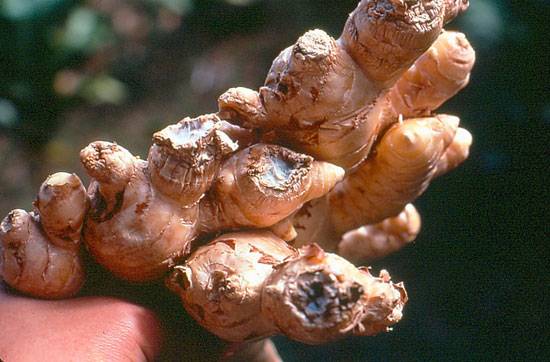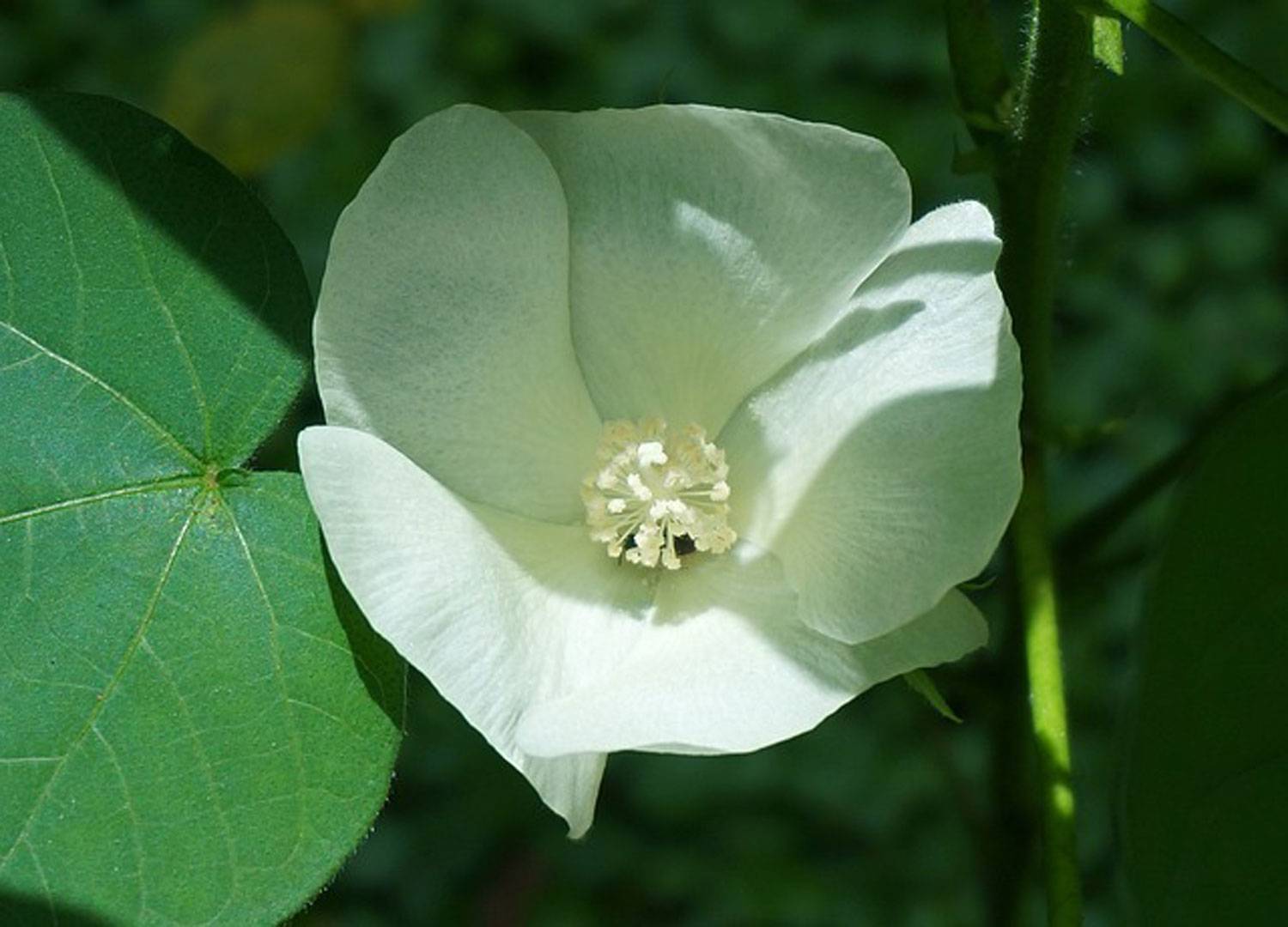Combined Role of Zinc and Ferrous and Bacterial Wilt
Combined Role of Zinc and Ferrous and Bacterial Wilt

Combined Role of Zinc and Ferrous and Bacterial Wilt
The combined application of zinc (Zn) and iron (ferrous, Fe) plays an important role in managing bacterial wilt in ginger caused by Ralstonia solanacearum. Both micronutrients contribute to plant health and disease resistance, and their interaction can enhance the plant's defense mechanisms. Here’s how the synergy between zinc and ferrous affects bacterial wilt management in ginger:
1. Role of Zinc in Ginger and Bacterial Wilt Resistance
- Cell Membrane Stability: Zinc helps maintain the structural integrity of plant cell membranes, making it more difficult for pathogens like Ralstonia solanacearum to invade plant tissues.
- Antioxidant Defense: Zinc activates antioxidant enzymes such as superoxide dismutase (SOD), which help neutralize reactive oxygen species (ROS) generated during pathogen attacks, reducing cellular damage.
- Improved Root Function: Zinc supports strong root growth, improving the plant's ability to absorb nutrients and water efficiently, reducing plant stress and vulnerability to bacterial wilt.
2. Role of Ferrous in Ginger and Disease Resistance
- Chlorophyll Synthesis: Iron is crucial for chlorophyll synthesis, which affects photosynthesis. Healthy and vigorous plants, supported by adequate iron, are better equipped to resist bacterial infections.
- Enzyme Function and Energy Production: Ferrous plays a key role in enzymes responsible for energy production, respiration, and nitrogen fixation. These processes are critical for root and shoot growth, enhancing the plant’s overall health and resilience against diseases.
- Defense Activation: Iron helps in the production of compounds like phytoalexins, which are antimicrobial substances that plants produce in response to pathogen attacks.
3. Synergistic Relationship Between Zinc and Iron in Disease Management
Zinc and iron work together in several ways to improve plant health and enhance resistance to bacterial wilt in ginger:
Balanced Nutrient Uptake: Zinc and iron are both essential micronutrients required in small amounts but are critical for proper plant functioning. However, their availability and uptake can influence each other. An imbalance (either too much or too little of one) can negatively impact the uptake of the other. For instance:
- Zinc Excess: Excessive zinc can lead to iron deficiency by interfering with iron absorption. This can reduce chlorophyll levels, weakening the plant and making it more susceptible to bacterial wilt.
- Iron Deficiency: Lack of iron can lead to reduced chlorophyll production (chlorosis), impairing photosynthesis and weakening plant defense systems. Maintaining a balanced supply of both zinc and iron is crucial for optimal plant health and disease resistance.
Enhanced Root Health: Zinc and iron together support healthy root development and function, which is particularly important for ginger crops. A healthy root system enhances nutrient and water uptake, reducing plant stress and susceptibility to bacterial wilt.
- Zinc enhances root membrane stability and nutrient absorption.
- Iron aids in root respiration and energy production, helping roots remain vigorous in pathogen-challenged environments.
Synergistic Role in Defense Activation: Both zinc and iron play vital roles in activating plant defense responses against bacterial pathogens. Zinc stimulates antioxidant enzyme activity, while iron is involved in the production of defensive compounds like phytoalexins. Together, they help plants mount a stronger, faster response to infections, reducing the chances of disease establishment.
4. Impact on Soil and Pathogen Suppression
Soil Microbial Activity: Zinc and iron, when applied together, may influence soil microbial communities that can suppress Ralstonia solanacearum populations. Beneficial soil microorganisms, such as plant growth-promoting rhizobacteria (PGPR) and biocontrol agents, often thrive in soils with balanced nutrient levels, including sufficient zinc and iron. These beneficial microbes can compete with or inhibit the growth of pathogenic bacteria.
Direct Pathogen Suppression: In certain cases, micronutrient management can influence the virulence of soil-borne pathogens. Zinc, for example, can directly reduce pathogen survival by altering soil conditions, while iron may limit pathogen growth by influencing the availability of nutrients required by the pathogen.
5. Practical Application of Zinc and Iron for Managing Bacterial Wilt in Ginger
Soil Testing and Nutrient Balancing: Prior to planting, soil testing should be conducted to determine the levels of both zinc and iron in the soil. Based on the test results, balanced fertilizer applications can be made to ensure optimal levels of both micronutrients. This reduces the risk of nutrient imbalances that could hinder disease resistance.
Fertilizer Application:
- Zinc Application: Zinc sulfate (ZnSO₄) can be applied to the soil or used as a foliar spray if deficiencies are observed. Soil application is generally preferred to improve overall plant health.
- Iron Application: Ferrous sulfate (FeSO₄) is commonly applied to address iron deficiencies. Like zinc, iron can also be applied as a foliar spray to correct deficiencies quickly.
Integrated Management with Water and Organic Matter: Proper water management and the addition of organic matter (such as compost) to the soil improve the availability of both zinc and iron to plants. Organic matter also supports soil microbial health, contributing to pathogen suppression.
6. Best Practices for Zinc and Iron Management in Ginger Fields
- Monitor Nutrient Levels: Regularly test the soil to ensure that zinc and iron are available in the correct proportions. Address deficiencies promptly to maintain healthy, disease-resistant plants.
- Avoid Overapplication: Overuse of either zinc or iron can lead to toxicity or nutrient imbalances. Excessive zinc can interfere with iron uptake, while excessive iron can disrupt the uptake of other micronutrients like manganese.
- Integrated Nutrient and Disease Management: Combine zinc and iron applications with other disease management strategies such as crop rotation, proper water management, and sanitation practices to achieve the best results in managing bacterial wilt.
The combined application of zinc and ferrous in ginger cultivation plays a significant role in managing bacterial wilt by improving plant health, supporting strong root systems, and enhancing the plant's defense mechanisms. Zinc and iron interact synergistically to ensure balanced nutrient uptake, optimal plant growth, and increased resilience against Ralstonia solanacearum. By carefully managing these micronutrients along with other integrated disease management strategies, farmers can significantly reduce the impact of bacterial wilt on ginger crops and promote sustainable agricultural practices.
Blog
Explore Our Blog






About Us
Welcome to Agriplaza
Welcome to Agriplaza. India's first and only comprehensive digital platform dedicated to agriculture and farmers. Explore widest range of related data our figures speaks a lot.
620478
Visitors
239
Diseases
131
Pests




